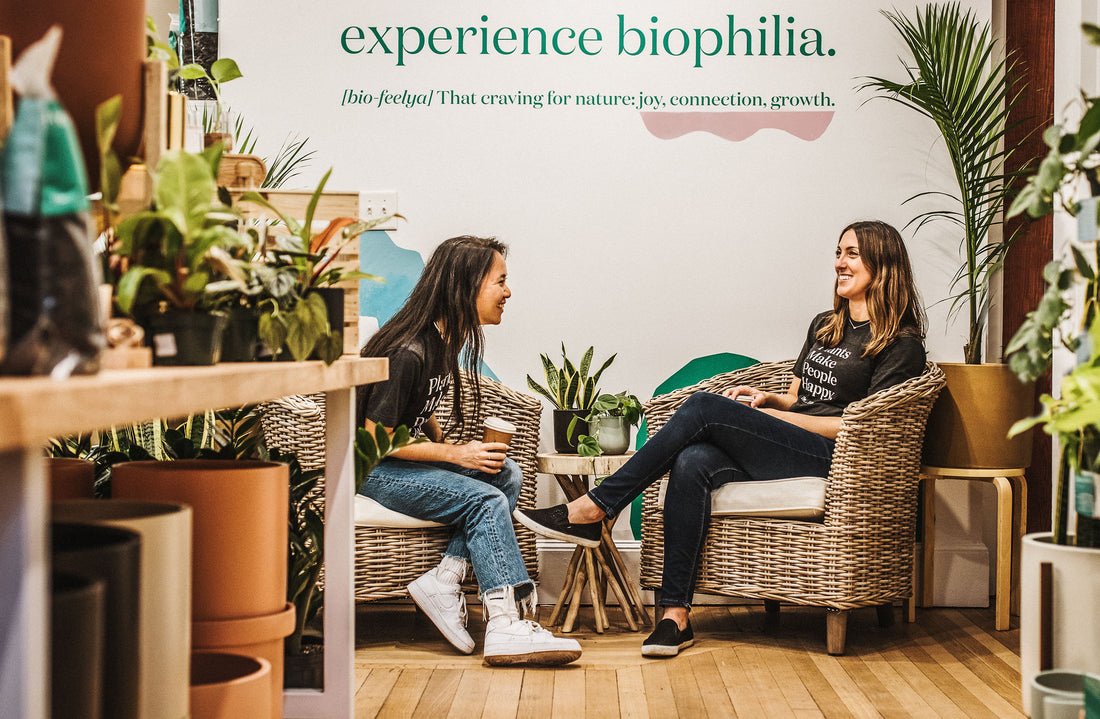
Common Care Questions
The Benefits of Houseplants
Indoor plants don’t just look good, they make us feel good mentally and physically, too. They've been shown to boost moods, increase creativity, and reduce stress—making for a healthier, happier you.

Not only do indoor plants enhance the overall appearance of a space, but studies show they boost moods, increase creativity, reduce stress, and eliminate air pollutants—making for a healthier, happier you.
Indoor plants don’t just look good—they can make us feel good, too. Studies have shown indoor plants can...
- Boost moods, productivity, concentration, and creativity
- Reduce stress and fatigue
- Clean indoor air by absorbing toxins, increasing humidity, and producing oxygen
- Add life to sterile spaces, offer privacy, and reduce noise levels
- Be therapeutic to care for
Plants Make Us Happier
When you feel down, it’s amazing what a walk in the park can do. That’s because when we get in touch with nature, we improve our wellbeing. Studies show time spent outside in green spaces can reduce our mental fatigue, increase our relaxation, and even improve our cognition.
However, according to the U.S. Environmental Protection Agency, we spend a considerable amount of our time indoors instead—around 90%. That is where indoor plants can come to the rescue. Although they are not a substitute for the ‘great outdoors’, indoor plants can provide similar benefits. Studies have shown even brief exposure to nature, like touching real foliage, can elicit an unconscious calming effect.
And not only can the presence of indoor plants soothe and restore—but scientific field studies have shown that in workspaces where indoor plants have been added, work performance increased, staff wellbeing improved, and sick-leave absences were reduced. Talk about plants with benefits!
So what is it about plants and nature that makes us happier and healthier? One theory is that our connection to nature and living things is in our DNA. Although philosophers and scientists have studied humans’ innate connection with flora and fauna for centuries, biologist Edward O. Wilson brought it into the 20th century his book Biophilia (1984). Wilson wrote about the biophilia hypothesis, which suggests all humans possess an innate tendency to seek connection with other forms of life—whether that be other humans, nature, or animals—and that this connection is deeply rooted in our biology.
The biophilia hypothesis is becoming more and more relevant as urban environments continue to grow, and we find ourselves interacting with technology more than nature and each other. It is vital for us to prioritize reconnection with the natural world to live happier, healthier lives. Next time you’re tempted to scroll through your phone, try sitting outside in a park or checking in on your houseplants instead.

Plants Improve Our Environment
Now that we know a little bit more about how plants can improve how we feel, let’s talk about how they can improve our environment. Plants can instantly beautify a space, but they can also contribute to improvements we can’t see, like indoor air quality.
Indoor plants can improve indoor air quality in a few ways. Through photosynthesis, plants absorb carbon dioxide and release oxygen, while through transpiration and evapotranspiration, plants release moisture vapor and increase humidity.
The NASA Clean Air Study showed houseplants and their associated microorganisms can remove volatile organic compounds from indoor air. Pollution is not only found in the outdoor air of dense cities, but also inside the places we work, visit, or call home. That’s because airborne toxins and pollutant gases can be emitted from mechanical equipment, building materials, and even everyday objects.
Plants can capture these indoor pollutants and convert them into stored energy, releasing naturally filtered air as a byproduct. Plants do this by absorbing the pollutants through their leaves and transmitting the toxins to their roots where they’re converted into a food source.
However, the research is inconclusive and somewhat dated. NASA’s 1989 study was conducted in a sealed, controlled environment, making it difficult to translate to our everyday conditions. Some argue to make a dent in air quality, you’ll have to fill your space with plants and seal it tight.
But if living in a greenhouse isn’t in the cards, you can still benefit from bringing plants inside. Plants will not negatively affect indoor air quality—they can only improve it, even if slightly—and the other benefits they can bring are just as impressive.
Photos by Reagan Byrne

Words By The Sill
Empowering all people to be plant people—a collection of articles from The Sill's team of plant experts across a variety of plant care topics to inspire confidence in the next generation of plant parents. Welcome to Plant Parenthood™.
Do Some Plant Shopping